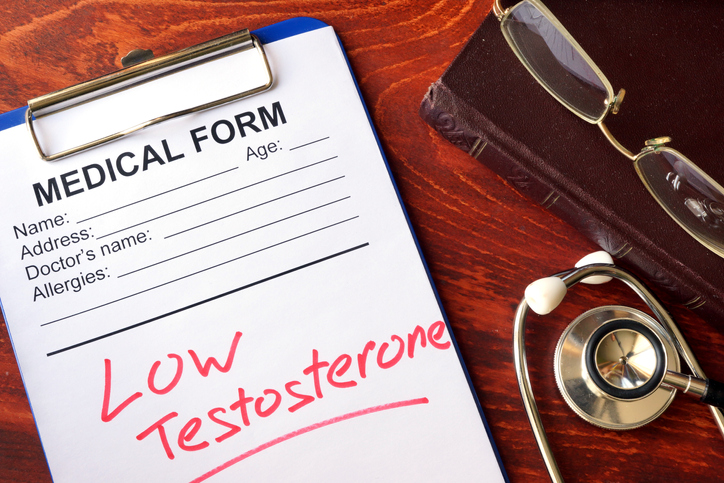Your cart is currently empty!

April 19, 2023
Testosterone Replacement Therapy (TRT) is an easy method for boosting the primary male sex steroid. Male testosterone is made at the testicles. The normal range of testosterone for adult males is about 300ng/dl to 1000ng/dl, ( “ng” is also called a “nanogram” which is a very small amount). Testosterone is also made by women. It is one of the major androgens in normal cycling women. The adrenal gland is responsible for making 25%, the ovary makes 25% and the rest is made through peripheral conversion of other circulating androgens. The normal levels of testosterone for adult men range from 20ng/dl to 70ng/dl. The causes of deficiency or decreased production and function of testosterone and/or sperm is referred to as Hypogonadism.
There are two classifications of low testosterone: Primary deficiency refers to a medical issue pertaining to the testes. The major causes include congenital abnormalities, infections, prior radiation, and systemic illnesses. Secondary deficiency refers to a medical process that can be related to the pituitary gland or hypothalamus of the brain with decreased production of the gonadotropins, FSH and LH. The gonadotropins signal the testes or ovaries to make its androgens and perform other functions.
Testosterone Replacement Therapy can help manage the signs and symptoms of low testosterone
- Decreased libido and sexual desire
- Depressed Mood, difficulty focusing
- Weight Gain, in areas around the belly and breast tissue
- Decrease in Lean Muscle Mass
- Hot Flashes
- Gynecomastia (Male breast tissue growth)
- Poor concentration
- Poor sleep quality
- Poor concentration
- Mood swings
- Lack of motivation or interest in activity
Although these are “non-specific” signs and symptoms, the diagnosis is made through the patient history, physical exam, and laboratory evaluation. Having these signs and symptoms alone does not diagnose the condition of low testosterone or hypogonadism/andropause.
Laboratory tor blood tests for low testosterone patients
Basic laboratory includes total and free testosterone, FSH and LH. The diagnosis of hypogonadism or low testosterone can be confirmed by finding decreased sperm in the semen and/or a low serum concentration of testosterone. Measurement of the serum testosterone concentration is usually the most important single diagnostic test for male hypogonadism because a low value usually indicates hypogonadism.
Testosterone Replacement Treatment (TRT)- What to expect
Testosterone replacement therapy is available through many different modalities. The best way, in my experience, is by injection of the testosterone hormone. The testosterone replacement therapy injection is painless and can be done twice a month. Men usually can be treated with 100mg weekly or 200mg every two weeks. Women can be treated with testosterone also. The dose is significantly smaller and less frequent. There are other methods of delivery of testosterone replacement therapy such as patches, creams, and pellets. These methods can be expensive and may be difficult to continue. One must be careful not to expose others with the topical preparations.
Follow-up labs are usually done in 6–8-week intervals. Adverse effects from abuse of testosterone can include changes in blood cholesterol, Gynecomastia, hepatitis, jaundice, elevated calcium levels, hypoglycemia, polycythemia, prostate hypertrophy or cancer, decreased spermatogenesis. Testosterone replacement to deficient males is very safe and effective. When used according to the stated guidelines, there are generally no bad side effects. Proper monitoring of testosterone levels reduce side effects to a minimum.
Dr. Fortino has successfully treated hundreds of men in the Philadelphia area for low testosterone in his 22 years of medical practice. Call Dr. Fortino’s testosterone replacement therapy clinic today to schedule your confidential low testosterone consultation. Dr. Fortino is the leading testosterone replacement therapy doctor in the Philadelphia area.